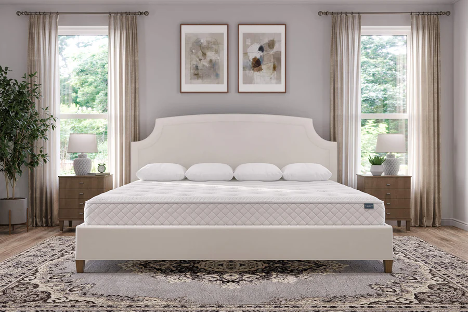Shared living spaces are increasingly becoming the norm, whether it’s roommates in a city apartment, students in dorms, or families cohabiting multi-generational homes. Creating a comfortable, functional, and harmonious environment is both a challenge and an opportunity. One of the most important principles to consider when organizing shared spaces is mastering proportion in bedroom setups, especially when square footage is limited. From smart furniture to personal boundaries, let’s explore the best strategies for making shared living work smoothly for everyone involved.

1. Understand the Needs of Each Resident
Every person in a shared living space has unique habits, schedules, and expectations. The first step to selecting the best setup is open communication. Whether you're moving into an apartment with strangers or planning a co-living arrangement with friends, ask the right questions:
- Do you prefer a quiet or lively atmosphere?
- Are you a morning person or a night owl?
- What’s your stance on shared vs. personal items?
Understanding each individual’s preferences helps you choose the right bedroom layouts, furniture choices, and communal rules.
2. Prioritize Space-Saving Furniture
In a shared setting, space is at a premium. Investing in multi-functional or space-saving furniture is a game-changer:
- Lofted Beds and Bunk Beds – Perfect for maximizing vertical space in bedrooms. The area underneath can be used for desks, storage, or lounging.
- Murphy Beds – Ideal for rooms that double as living areas.
- Fold-Out Tables or Desks – These can be stowed when not in use, freeing up valuable floor space.
- Storage Ottomans – Combine seating with hidden storage.
The key is choosing furniture that serves more than one function without crowding the room.
3. Define Personal and Shared Zones
To avoid conflict and foster respect, it’s essential to distinguish between communal and private zones.
- Shared zones might include the living room, kitchen, and bathroom.
- Private zones are typically individual bedrooms or designated desk areas.
Use rugs, curtains, shelving, or even furniture placement to subtly define boundaries. This visual separation helps maintain a sense of personal space, even in close quarters.
4. Smart Storage Solutions
Clutter is the enemy of harmony in a shared space. That’s why efficient storage is non-negotiable.
- Under-bed bins and over-door organizers make use of often-overlooked areas.
- Wall-mounted shelves and pegboards free up floor space.
- Invest in vertical storage units to avoid congestion.
Label shared items and assign each resident their own space in common areas like the pantry or bathroom cabinet. A well-organized home is easier to clean and far less likely to cause disputes.
5. Create a Neutral Aesthetic
In a shared home, decor should be inviting to everyone. Aim for a neutral, cohesive aesthetic in shared areas:
- Stick to muted or natural tones for walls and larger furniture pieces.
- Add personality with textiles (like throw pillows and curtains) that can be swapped out easily.
- Avoid controversial or extremely personal artwork in common spaces.
For bedrooms, however, allow each person to decorate freely within their own zone. This balance of individuality and unity keeps the space feeling both personal and welcoming.
6. Sound and Light Control
Privacy isn't just visual—it’s auditory and atmospheric too. Shared living spaces can get noisy, and sleep schedules rarely align. Combat these challenges with:
- White noise machines or noise-canceling curtains
- Door draft stoppers to reduce sound leakage
- Smart lighting solutions such as dimmable bulbs or smart lamps that can be controlled individually
Also consider using blackout curtains in bedrooms, especially if one roommate works nights or naps during the day.
7. Shared Budget, Shared Responsibility
Even the best physical setup won’t work if there's no shared sense of responsibility. Create a chore chart or shared calendar to manage cleaning, supplies, and bills.
Apps like Splitwise or Venmo can help keep financial contributions fair and transparent. A shared spreadsheet can also help track who last bought toilet paper or when the common area was vacuumed.
Transparency fosters accountability, which leads to a more positive living experience for all.
8. Conflict Resolution Protocol
Conflicts are inevitable, but how they’re handled makes all the difference. Agree in advance on a conflict resolution method:
- Weekly check-ins can provide a safe space to air concerns.
- Create a “house rules” document with everyone’s input—print it and post it.
- Establish a 24-hour cooling-off rule if tempers flare.
Respecting each other’s time, space, and differences is the cornerstone of a healthy shared living dynamic.
9. Tech Tools to Streamline Life Together
Smart technology can take shared living to the next level:
- Smart thermostats help maintain comfort levels for everyone.
- Voice assistants can be used for reminders, music, or shared grocery lists.
- Digital locks allow for easy keyless entry while maintaining security.
These tools not only modernize the home but also help create smoother communication and efficiency.
10. Flexibility is Key
Perhaps the most important quality in any shared living arrangement is flexibility. Life changes—people come and go, schedules shift, needs evolve. Keep furniture modular and expectations adaptable.
Be open to rotating room setups or renegotiating shared responsibilities as needed. A willingness to adjust will go a long way in preserving harmony in your shared space.
Final Thoughts
Living with others doesn’t have to mean sacrificing comfort or personal style. With thoughtful planning and open communication, shared living can become a rewarding experience full of collaboration and community. By focusing on practical furniture, clear boundaries, and shared responsibilities, you’ll turn even the most compact space into a haven everyone can enjoy.
Whether you're moving into a dorm, co-living with friends, or sharing a family apartment, the right strategies—like mastering proportion in bedroom setups and streamlining storage—can make all the difference.







